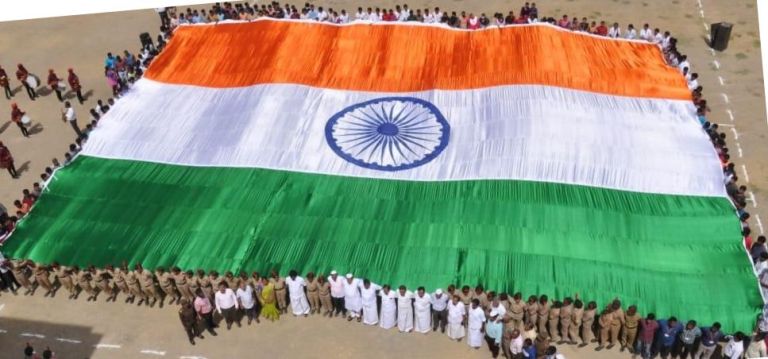The second edition of the Performance Grading Index (PGI)—the national school education rating chart of country’s 28 states and 9 UTs and based on the performance of their government schools and private aided schools for the year 2019-20, which was released on June 6 by the union Ministry of Education (MoE), made headlines more for political reasons than findings in terms of improvements or gaps. Between Delhi and Punjab who stood where in the league table became a political tussle of sorts. While as the newly released PGI gave Punjab the top-ranking among all the states and UTs, Delhi, which has been advertising its education model globally for the past five years, came at a ‘distant’ sixth position.
The announcement came at a time when electoral politics of poll-bound (next year) state of Punjab is already charged and Aam Aadmi Party (AAP) ruling Delhi state is seen as a serious contender and could emerge as the key player in the state after elections.
Obviously, the top rating for the state (Punjab) came as a shot in the arm of the incumbent Congress-government in Punjab battling opposition from within the ruling party and outside and it celebrated the achievement giving opponents especially giving AAP a run for its money. One of the key election planks of AAP is the success of its school reforms in Delhi and the party wants to cash it with similar promises in Punjab. Punjab has government 19300 schools as against 1265 of Delhi.
So within a few days of the release of the PGI report and ‘congratulatory’ government hoardings in Punjab, Delhi’s deputy chief minister, Manish Sisodia, who is also the education minister, at a presser called the top rating a gift of PM Modi to Punjab CM, Captain Amrinder Singh as according to him both have a secret pact and Modi wants Captain to win the next elections scheduled in 2022. He said, “Modiji has stamped the work of Captain (Amrinder Singh) of past five years as number one in the country while ignoring the fact that thousands of schools have shut or have been handed over to private sector and people are troubled by working of government schools in the state.”
In response, the social media savvy education minister of Punjab, Vijay Inder Singla, rebuffed his statement and said the performance of the state on various indicators speaks for itself. He added, “We have achieved this ranking on evaluation against 70 parameters emphatically which was possible due to pragmatic leadership of our chief minister, policies and hard work of all those involved in the affairs of school education. A proof about our good work is that nearly 6.5 lakh students have joined government schools all this while, of these 5.5 lakh after leaving private school.” “Punjab Smart Connect Scheme”, marked by the distribution of smartphones to thousands of students in the state has been duly appreciated in pandemic. The achievement by the northern state has also broken Kerala’s streak of remaining at the top in education development rankings for many years.
Performance Grading Index was launched in 2018 following the amalgamation of the outcome of Prime Minister’s review discussions on school education and NITI Aayog created SEQI (School Quality Education Index). The first PGI was for the year 2017-18 and was released in 2019. The purpose of the PGI is to help the States and UTs to pinpoint the gaps and accordingly prioritize areas for intervention to ensure that the school education system is robust at every level. At the same time it is also meant to be a good source of information for best practices followed by States and UTs which can be shared.
PGI is structured in two categories, namely, Outcomes, and Governance & Management and comprises 70 indicators in aggregate with a total weightage of 1000. The 70 parameters are grouped into five broad indicators: Learning Outcomes & Quality-180 (weightage), Access-80, Infrastructure & Facilities-150, Equity-230, Governance Processes-360. Information on the indicators are drawn from data available with the DoSEL from the Unified District Information System for Education (UDISE), National Achievement Survey (NAS) of NCERT, Mid Day Meal website, Public Financial Management System (PFMS) and the information uploaded by the States and UTs on the Shagun PortalEL. The PGI grading system has 10 levels. Level 1 indicates top-notch performance and a score between 951 and 1,000 points. Level II, also known as Grade 1++, indicates a score between 901 and 950. The lowest means a score between 0 and 550 points.
Punjab, the top ranking state got a total score of 929 out of 1000 as against 896 of Delhi. Punjab scored 126/180 in Learning Outcomes & Quality, 79/80 in Access, 150/150 in Infrastructure & Facilities,228/230 under Equity, and 346/360 in Governance Processes. Delhi is followed by Chandigarh, Tamil Nadu, Kerala and Andaman and Nicobar in the 900-950 (1+) grade. While Ladakh (545) and Meghalay (649) are at the bottom of the table, Bihar, Assam, Chhattisgarh and Madya Pradesh aren’t any better with their scores below 750.
While learning outcomes calculated on the scores of students in Language and Mathematics in standard 3, 5 and 8 continues to be an area of concern, the governance processes are emerging as weakest links in country’s mammoth school education system. Significant shortfalls in availability of ICT facilities and timely availability of textbooks and uniforms have been alo captured by the index.
Clearly, with shadow of covid-19 pandemic continuing over the school education system for the foreseeable future, PGI has provided a peep into the urgent priority areas for states to work on especially digital access and tools. The spirit of competition among states that PGI seeks to inculcate has already started manifesting and for a welcome improvement if education indeed enters electoral campaigns, it will be a boon for the public education agenda. –AN













